Wednesday 3 June 1942
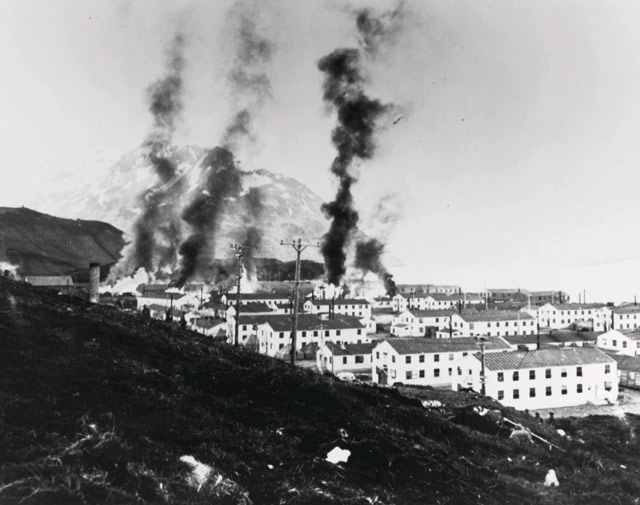 |
| Fires burning at Dutch Harbor after the 3 June 1942 Japanese air raid (US Army). |
Battle of the Pacific: At 09:04 on 3 June 1942, Ensign Charles R. Eaton, patrolling 470 miles from Midway Island, spots three Japanese ships. The Japanese quickly fire on him with anti-aircraft guns but he escapes and radios in his sighting. This is the first encounter of what will become the Battle of Midway.
At about the same time, another airman, Ensign Jack Reid, is patrolling 500 nautical miles (580 miles, 930 km) southwest of Midway in his PBY-SA when he also spots some ships in the distance. At 09:25, he radios in, "Sighted main body." He follows up with more details, ultimately reporting 11 ships at 11:00 before being ordered to return to base. Reid has not spotted the main Japanese force but rather transport ships commanded by Admiral Tanaka.
Lt. Col. Walter C. Sweeney leads a force of nine B-17 bombers stationed at Midway against the ships spotted by Reid at 12:30. Sweeney's force scores no hits and barely makes it back to Midway, landing at 21:45.
Another U.S. strike departs at 21:15, this time four PBY Catalinas bent on a night attack. Arriving over the target at 01:00 on 4 June, they score one hit on the Japanese force, a torpedo strike on the bows of tanker Akebono Maru that kills 13 sailors. Transport Kiosumi Maru also sustains some strafing damage that kills four crewmen. This attack features the only successful U.S. air-launched torpedo strike of the Battle of Midway.
 |
| "Battle of Midway, 3 June 1942" - "US Navy aircraft carrier USS Yorktown and its escorts defend themselves from incoming Japanese aircraft, one of which has splashed down into the ocean" (Rodolfo Claudus ca. 1950) (Naval History and Heritage Command). |
The second prong of the Japanese strategy (Operation AL) is an invasion of some of the Aleutian Islands. The Americans know about this from their codebreaking but have concentrated the bulk of their naval forces at Midway. Planes from two light Japanese aircraft carriers (Ryujo and Junyo) under the command of Vice-Admiral Boshiro Hosogaya take off in a dense fog and rough seas to raid the Dutch Harbor Naval Operating Base and Fort Mears at Dutch Harbor on Amaknak Island, Alaska. Only about half of the planes make it to the target. Despite some heavy anti-aircraft fire, the Japanese Nakajima B5N, Navy "Kate," Bombers drop 16 bombs on Fort Mears, then get clean away before P-40s stationed at Cold Bay arrive. There are 25 dead and many other casualties, while the Japanese lose only one plane.
The attack on Dutch Harbor is only a distraction from the main Japanese objective in the Aleutians, which is to occupy islands Kiska and Attu further down the chain. During this raid, the Japanese planes sink the 3497-ton U.S. passenger ship Northwestern (no casualties). Japanese cruisers launch four Nakajima E8N2 Navy Type 95 reconnaissance seaplanes, Allied Code Name "Dave," to fly over Umnak, losing one to U.S. ground fire. A PBY-5A Catalina of VP-42 locates the Japanese ships, while the Japanese shoot down another PBY and take three of its crew as prisoners aboard the cruiser Takao. A Japanese "Zeke" bomber crashlands in a bog on Akutan Island and U.S. forces later recover it and the dead pilot.
The five Japanese submarines waiting off the coast of Australia near Sydney to pick up the crews of the mini-submarines that attacked Sydney Harbour give up hope and disperse. The mini-sub crews are all dead, though two men nearly made it to the rendezvous point before being killed by troops. I-24, one of these five submarines, then torpedoes and sinks 4812-ton Australian ore carrier Iron Chieftain in the Tasman Sea 35 miles east of Manly (there is a monument to the 12 dead crewmen of Iron Chieftain outside Newcastle railway station). There are 27 survivors. The sinking of Iron Chieftain helps lead to the formation of convoys along the Australian coast between New South Wales, Victoria, and South Australia.
I-20 is the last of the five Japanese submarines to depart from the recovery area. During the afternoon, it surfaces and fires flares and sends radio signals, but nobody appears. Finally, at 18:00, it, too, departs.
U.S. Navy 115-ton patrol boat Vagabond collides with patrol craft PC-569 while patrolling west of the Golden Gate Bridge and sinks. There are no casualties.
U.S. 16-ton fishing trawler sinks in Sitka Sound in the Alexander Archipelago in Southeast Alaska near Saint Lazaria Island off of Cape Edgecumbe in Kruzof Island. The cause of the sinking is unidentified, but it may be due to enemy action.
B-17 bombers of the 5th USAAF Air Force bomb Rabaul. They hit a wharf, a warehouse area, and a military camp.
 |
| "Japanese attack on Dutch Harbor, June 3, 1942. Group of Marines on the "alert" between attacks. Smoke from burning fuel tanks in the background had been set afire by a dive bomber the previous day. Alaska." (National Archives 80-G-12076). |
Battle of the Indian Ocean: The 10th USAAF Air Force sends 6 B-25s of the 11th Bombardment Squadron, 7th Bomber Group, from Dinjan, India, to bomb Lashio, Burma. They then continue on to Kunming in perhaps the first example of "shuttle bombing." The mission turns into a disaster when three bombers crash into the Himalayas at 10,000 feet in heavy overcast conditions and a fourth runs out of fuel and crashes near Chan-i, China. Only two of the bombers actually reach Kunming, where they are fired upon by Chinese fighter planes that have not been informed of the operation and one radio operator is killed..
At Diego Suarez, the British complete emergency repairs to the 30x30-foot hole blown in battleship HMS Ramillies from a mini-sub attack and it departs for more permanent repairs at Durban.
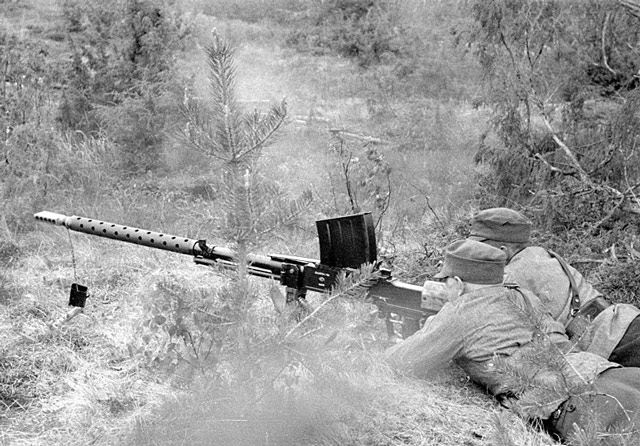 |
| Finnish Lahti L-39 anti-tank gun in use on 3 June 1942 (Military Museum of Finland (Kuva)). |
Eastern Front: The German artillery fire and air assault on Sevastopol continue today as the Germans try to weaken the Soviet defenses for a full-scale assault. The target area today for the rolling bombardment is the defensive area facing the German 30th Army Corps south of the city.
General Franz Halder at Fuhrer Headquarters notes in his war diary:
The enemy has reacted to our artillery attack on Sevastopol with counterbattery fire. Work on fortification in progress. Ship movements. No important changes on the other fronts.
General von Manstein, commander of 11th Army, plans to begin his attack on Sevastopol (Operation Sturgeon Catch (Störfang)) on 7 June. He is quickly redeploying troops from the eastern half of Crimea, where some Soviet holdouts in caves are causing trouble, to the west to participate in the Sevastopol assault. It is a very peculiar situation for the Germans on the Eastern Front where the hot spot is to the west and not the east.
Oblt. Siegfreid Freytag of 6./JG 77 claims his 50th victory. He soon will transfer to the Mediterranean Theater.
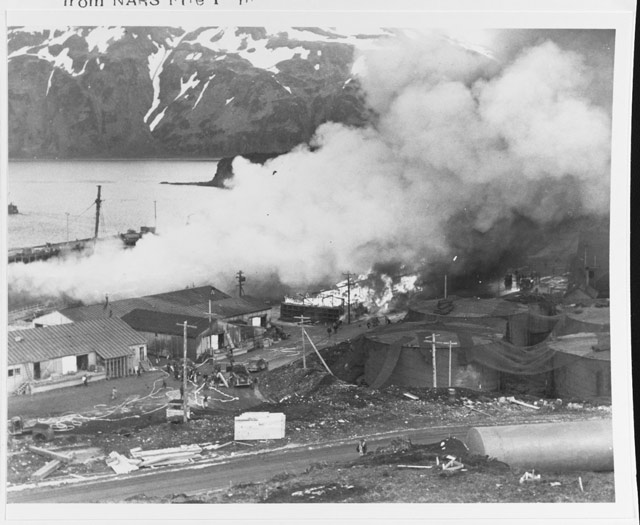 |
| "Siems Drake warehouse afire, following the attack by Japanese carrier aircraft. Note fire fighting parties at work, and S. S. NORTHWESTERN burning at left." Dutch Harbor, 3 June 1942. (Naval History and Heritage Command 80-G-12056). |
European Air Operations: The weather over the Channel Front is clear and warm. There are no major attacks today. RAF No. 403 Squadron (RCAF) moves from Southend to Martlesham. At RAF Chelveston, a small Hotspur glider of the Airborne Forces Experimental Establishment (AFEE) 14th Operational Training Unit breaks up mid-air near Greetham Village, Ruland, and the crew bales out (one killed and one uninjured).
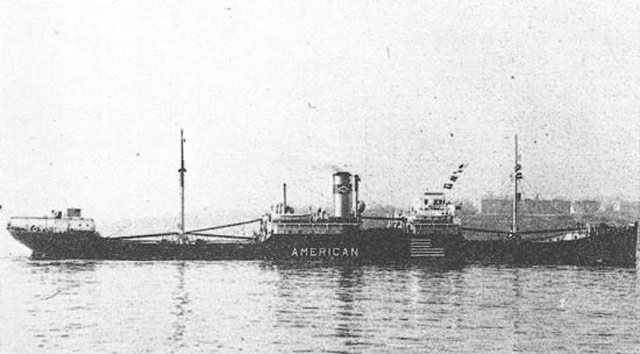 |
| U.S. ore freighter City of Alma, sunk by U-172 on 3 June 1942. |
Battle of the Atlantic: U-404 (Kptlt. Otto von Bülow), on its third patrol out of Brest, torpedoes and sinks 1345-ton Swedish freighter Anna 210 miles northwest of Bermuda. Von Bülow begins his attack with two torpedoes at 03:09 and 04:50 but misses with both. Finally, at 05:10, he surfaces and uses his deck gun. The attack is a little controversial because von Bülow's crew clearly sees Swedish (neutral) markings, but he decides to attack anyway because the ship is acting suspiciously (zig-zagging and without navigational lights). There are no dead among the 32-man crew, though two men are wounded in the attack. The survivors take to the boats and are picked up within 13 hours by Swiss freighter Saentis, which also picks up survivors of freighter West Notus, sunk by the same U-boat on 1 June.
U-172 (Kptlt. Carl Emmermann), on its second patrol out of Lorient, torpedoes and sinks the 5446-ton U.S. freighter City of Alma 400 miles northeast of San Juan, Puerto Rico. The ship is carrying manganese ore and sinks within three minutes. The radio operator remains on board to send a distress call but the ship sinks so quickly that he goes down with the ship without sending any messages. There are 29 dead and 10 survivors, who survive in a lifeboat and are picked up by U.S. patrol boat USS YP-67. Third Mate Hugh Parks Brown, Jr. the Merchant Marine Distinguished Service Medal for saving other crewmen.
U-156 (Kptlt. Werner Hartenstein), on its third patrol out of Lorient, stops 80-ton British schooner Lillian near Grenada and Barbados (40 miles south of Barbados) after the ship first ignores a command to stop (warning shot through the rigging). A few crew remain aboard the ship and attempt to sail away while others take to the boats. The U-boat chases the fleeing ship after questioning the men in the boats and finally sinks it with gunfire. Hartenstein apparently uses the incident for target practice, or maybe he is just angry (and tired, as he already has sunk or damaged 11 ships on this patrol), as he uses an astounding 52 rounds of 37mm and 270 rounds of 20 mm) to sink the wooden ship. There are three dead and 22 survivors.
U-502 (Kptlt. Jürgen von Rosenstiel), on its fourth patrol out of Lorient, torpedoes and sinks 6940-ton U.S. freighter M.F. Elliott 150 miles northwest of Trinidad (west of St. George's Island). The ship, carrying just water ballast, sinks within six minutes. There are 13 dead and 32 survivors, who are picked up by Brazilian tanker Santa Maria after five days adrift.
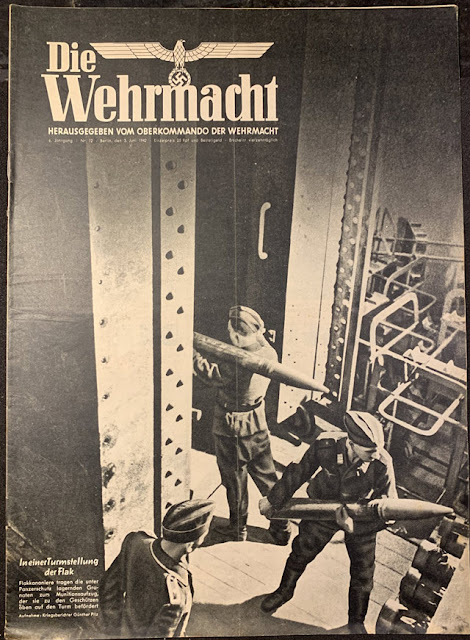 |
| Die Wehrmacht Magazine, 3 June 1942. |
U-432 (Kptlt. Heinz-Otto Schultze), on its fifth patrol out of La Pallice, spots two fishing trawlers 170 miles east of Thatchers Island in the Bay of Fundy (northeast of Boston) and surfaces. After allowing the crewmen to leave their vessels, Schultze uses his deck gun on the trawlers. Sunk are 41-ton Aeolus and 102-ton Ben and Josephine. All of the fishermen (14 men total) survive, making landfall at Mount Desert Coast Guard Light Station after 36 hours.
U-126 (Kptlt. Ernst Bauer), on its fourth patrol out of Lorient, torpedoes and sinks 10,990-ton Norwegian tanker Høegh Giant 400 miles east of Guiana. Bauer attacks at 11:24 and hits with one of three torpedoes, but the ship continues sailing. He then surfaces, but the tanker crew use the deck gun to fire at the U-boat, forcing Bauer to submerge and chase it. A long ordeal results, with Bauer finally getting into firing range at over 14 hours later 01:40 on 4 June. Two torpedoes hit, and the crew abandons the ship. The tanker finally sinks at 04:24 after Bauer has to fire a coup de grâce. Bauer clearly is furious about the entire incident. He surfaces and, when he does not get the answers he wants from the men in the lifeboats, he has his men fire over the boats, wounding one survivor with a stray bullet. The survivors spend at least ten days at sea, with most landing at Devil Island after ten days and the rest being picked up after 15 days. While the survivors are being transported to New Orleans aboard freighter Robert E. Lee, that ship also is sunk (by U-166), but all the survivors of Høegh Giant survive that sinking, too.
U.S. 5686-ton freighter Steel Worker hits a mine and sinks 3000 yards from Mishayampi, Murmansk. The ship has traveled all the way from Philadelphia with foodstuffs only to be sunk less than two miles from its destination. There are no casualties.
German Navy whaler V-1510 Unitas VI, being used as a patrol boat, strikes a wreck and sinks at the entrance of Dieppe, France. No known casualties. This incident is sometimes claimed to have occurred on 2 June 1942.
RAF Vickers Wellington bombers of No. 172 Squadron damage Italian submarine Luigi Torelli near Aviles, Spain. The ship is towed to Aviles and beached. After temporary repairs, it is refloated and taken to Spain for permanent repairs.
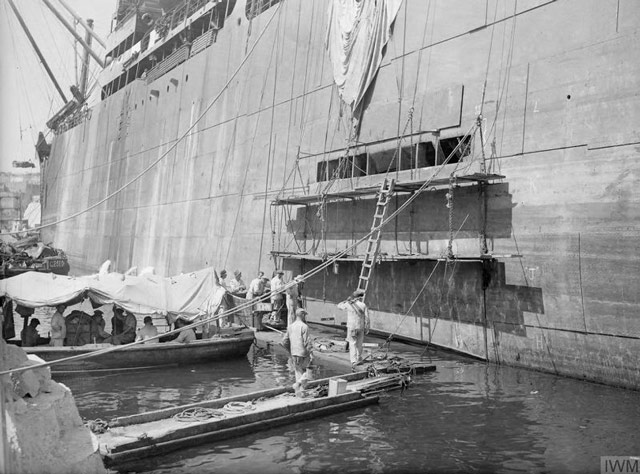 |
| Freighter Orari having a temporary patch installed at Malta on 3 June 1942. © IWM A 10774. |
Battle of the Mediterranean: German General Erwin Rommel and the bulk of the Afrika Korps remain bottled up in The Cauldron, a defensive position west of Tobruk. However, while no longer on the offensive, they now have cleared supply lanes to the west and are receiving reinforcements. The siege of Free French forces at the fortress of Bir Hakeim continues with little change in the situation today as the Axis forces bombard the entrenched French with artillery and Luftwaffe attacks.
The air war is going surprisingly poorly for the RAF. The pilots of III./JG 53 claim three victories over the British in the vicinity of El Alamein. One of the issues is that the Luftwaffe has brought elite units to North Africa.
Air activity over the front is ferocious. Oblt. Hans-Joachim Marseille of 3./JG 27 claims 6 Tomahawks of SAAF No. 5 Sqdn. and damage to two others in 12 minutes. Among his victims is an ace with five victories, Captain Botha, who himself had just shot down three Junkers Ju-87 Stuka dive bombers. Marseilles and the other planes clear the skies, opening them up for more Stuka attacks on Bir Hakeim. Joachim Marseilles now has 75 victories and will receive the Eichenlaub (oak leaves) to his Iron Cross on 6 June as a reward. He quickly is becoming a legend, and one of the men in his unit, Hans-Arnold Stahlschmidt, writes in a letter home, "Marseille is able to shoot like a young God. Above all, he is able to do what only a few can - to shoot with perfection while turning."
U-331 (Kptlt. Hans-Diedrich Freiherr von Tiesenhausen), on its seventh patrol out of Messina, torpedoes and sinks Royal Navy trawler HMT Cocker off Bardia, Libya. There are 15 missing/dead, with one wounded man (Ty/Lt D M Engeler RANVR) surviving.
Battle of the Black Sea: German Navy ferry barge (Marinefahrprahm) F 145 hits a mine and sinks in the Black Sea southeast of Odesa. there are nine deaths.
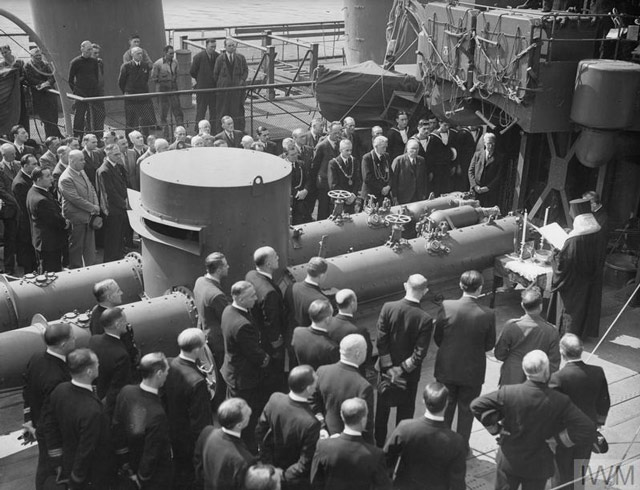 |
| Greek destroyer Pindos being commissioned at Swan Hunters, Wallsend on Tyne, 3 June 1942. © IWM A 8677. |
Special Operations: British special forces (No. 6 Commando) stage an overnight raid on the German radar site at Plage-Ste-Cecile, France (between Le Touquet and Boulougne). This is Operation Bristle, one of a number of Commando missions during 1942 designed to give the special forces training and experience. The Germans, however, prevent the Commandos from achieving their objectives. Empty-handed, the Commandos depart and are still at sea at dawn when the Luftwaffe appears overhead and causes damage to two motor launches and a motor gunboat. One Commando and two naval personnel are killed and 19 others are wounded. The force manages to make it back to port only due to the fortuitous arrival of RAF forces to scatter the attacking Luftwaffe planes.
Reinhard Heydrich, shot by British/Czech Special Operations Executive agents on 27 May during Operation Anthropoid, appears to be recovering from the attack when he suddenly collapses while eating lunch around noon. He lapses into a coma from which he never recovers. One theory is that this relapse is caused by a systemic infection, another by a pulmonary embolism.
 |
| Chaskel Bittner, shown, is transferred from Montelupich prison in Cracow to Auschwitz on 3 June 1942. Bittner becomes No. 37249. He perishes at the camp on 26 June (Auschwitz Memorial). |
British Homefront: The British government nationalizes the milk industry and coal mines.
American Homefront: The Rodgers & Hart (Richard Rodgers and Lorenz Hart) musical "By Jupiter" premieres at the Schubert Theater on Broadway. Starring Ray Bolger and Vera-Ellen, the play is set in the land of the Amazons, who do battle with a Greek army led by Theseus and Hercules and then engage in romantic complications. Nanette Fabray later joins the cast. The play is a big hit and runs for 427 performances until 12 June 1943. While little remembered, "By Jupiter" is Rodgers and Hart's longest-running Broadway hit and final original full-length work.
Future History: Curtis Lee Mayfield is born in Chicago, Illinois. He begins a musical career in a gospel choir, then joins the vocal group The Impressions in the mid-1950s. He also becomes a songwriter, including the hit "People Get Ready" in 1965. Mayfield turns solo in 1970 and engages in various projects, including creating the soundtrack to the film "Super Fly" in 1972. While performing in 1990, Mayfield is paralyzed during an accident involving lighting equipment, but he continues recording. Curtis Mayfield passes away on 26 December 1999.
 |
| Flak batteries shown in the 3 June 1942 Die Wehrmacht Magazine. |
2021
No comments:
Post a Comment